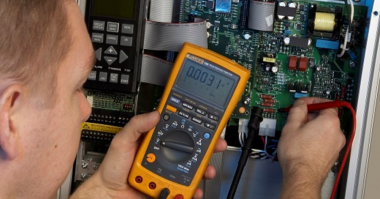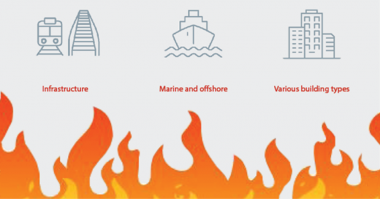Management of water and wastewater is a major issue in the central highlands of Arizona, which gets only about 12 inches of precipitation a year. That’s especially true for the City of Cottonwood, a fast-growing town in the Verde River watershed of Yavapai County, Arizona’s second fastest growing county. In 1990, the City constructed a wastewater treatment plant, the first in the Verde Valley. To handle growing water demands, the City devised a strategic water management plan in 2003 that included creating a modern municipal water system with effective monitoring, control and pumping technology – a development made possible by Danfoss variable frequency drives (VFDs).
“The Verde River is one of the few perennial rivers in Arizona,” explains Daniel J. Lueder, development services general manager for City of Cottonwood Utilities. “But the City has to use groundwater resources for our potable water supply. The plan called for forming a municipal water system by acquiring several private water companies, which presented a number of piping and pumping challenges.”
Satisfying increased water demand requires accuracy, efficiency
In 2004, the City acquired three private water companies – Clemenceau, Cordes Lakes, and Verde Santa Fe – and subsequently added the Cottonwood Water Works, Spring Creek Water Company, and Quail Canyon water systems. Currently, there are over 28 wells in the City’s system with a customer base of about 10,000 – an unusually high well-to-customer ratio compared to parts of the United States with more rainfall.
The City’s Water Division is responsible for water supply and distribution, including storage tanks, wells, fire hydrants, pumps, and water meters. “The City’s water production system is predominately a direct pumping system,” explains Doug Ryan of Grand Canyon Pump and Supply’s Phoenix location, who provides equipment sales and application support to the Water Division. “Water is pumped from wells into a holding reservoir. Secondary booster pumps transport the water into building zones and housing developments.”
Ryan notes that in the old distribution system design, when the pressure in the hydro-pneumatic tank would, for example, drop to 50 psi, “a pump would kick in to replenish the tank to about 70 psi. But running the pump that way subjected the pipe to a 20 psi pressure change. The pressure change constantly stressed the pipe, creating leaks as the pipe fatigued and aged. In addition, the existing control system created water hammer on the piping system further compounding the issue.”
With nearly 100 miles of pipe in the system, water hammer caused significant leakage – as much as five to seven per week in the main line, in addition to one to two leaks in the service lines.
Instead of turning pumps on and off causing a 20 psi differential, Ryan talked to Danfoss about using VLT® AQUA Drives to convert nine sites from a fixed-speed hydro-pneumatic system into a duplex variable speed constant pressure system.
With the constant pressure design, one or more pumps are online at all times to keep the system pressurized. “We developed a program using the built-in Danfoss Smart Logic Controller (SLC) to load into the drives to operate in a lead, lag and duplexing sequence,” says Ryan. “That means one pump is the lead pump. If lead pump reaches maximum speed, then the lag pump starts maintaining pressure within 2 – 3 psi.”
The VLT® Drive’s onboard control intelligence made the conversion easy. There was no need to buy an expensive PLC and pay a programmer to program the control sequence.
With the new constant pressure design, the average pipe pressure is in a 60 to 65 psi range. “It really cuts down on leaks by reducing pipe fatigue and system damage,” observes Leuder.
To drive the pumps, Ryan employed Danfoss VLT® AQUA Drives.
“The VLT® AQUA Drive is designed specifically for water, wastewater, and irrigations pumps,” he notes. “For this application, the drive was combined with a differential pressure transducer to allow the VLT® Drive to measure and regulate water pressure. It’s more accurate and far more energy efficient than using throttling valves.”
“My technician is a huge believer in constant-pressure pumps and the Danfoss VLT® Drive,” says Leuder. “This design stabilized pipe pressure and practically eliminated water hammer. Water main leakage decreased substantially, so a lot less time is spent digging up and repaving roads to make repairs.”




